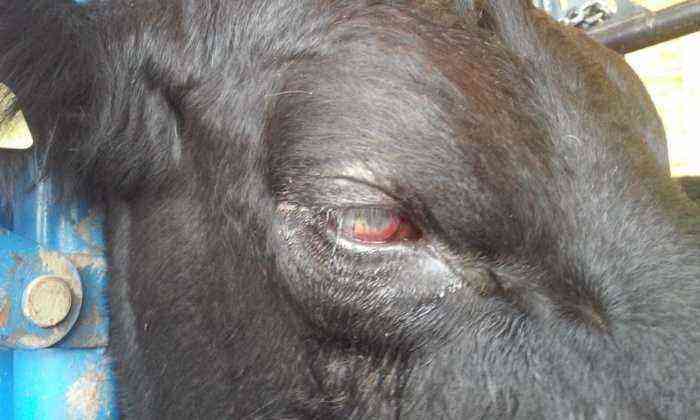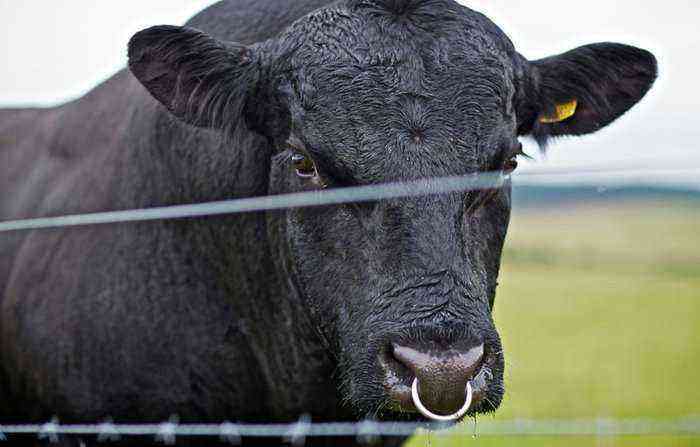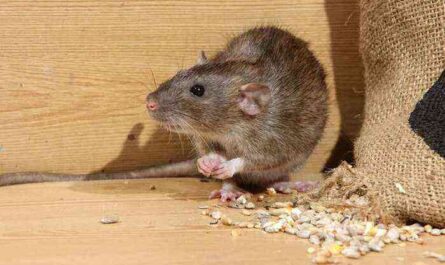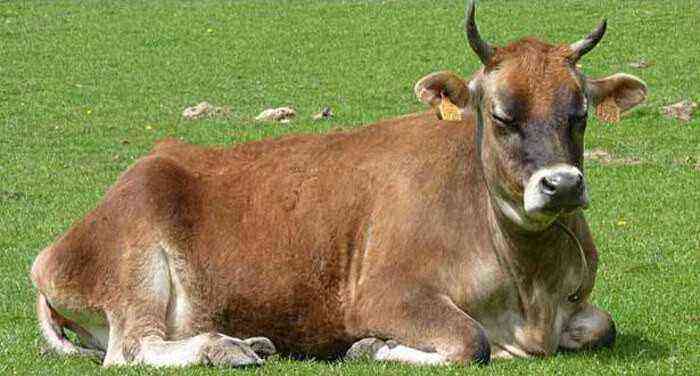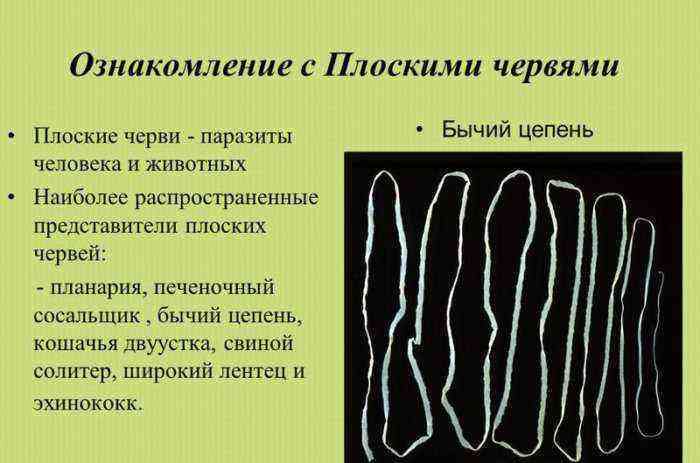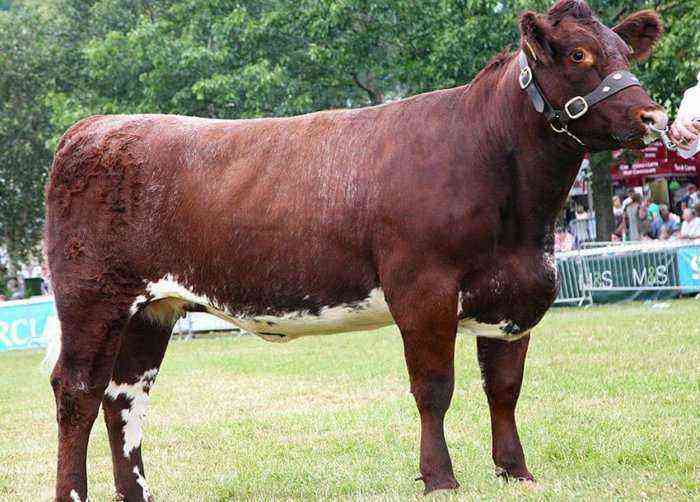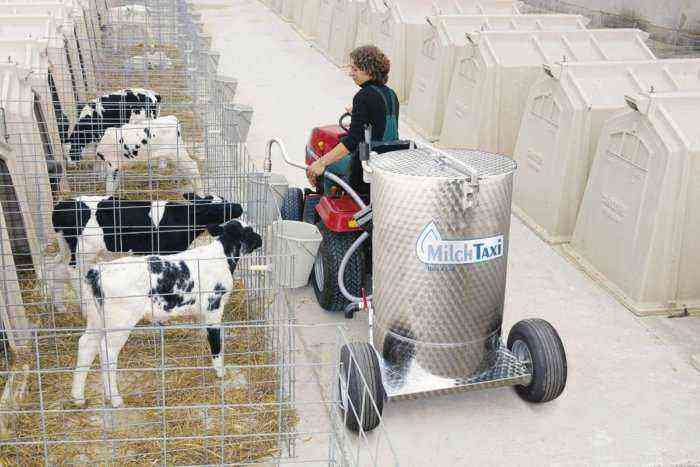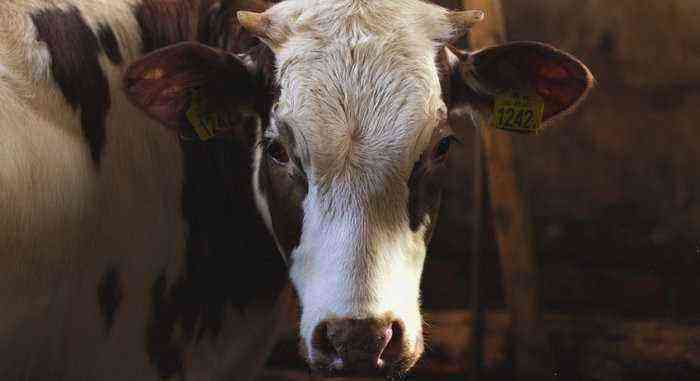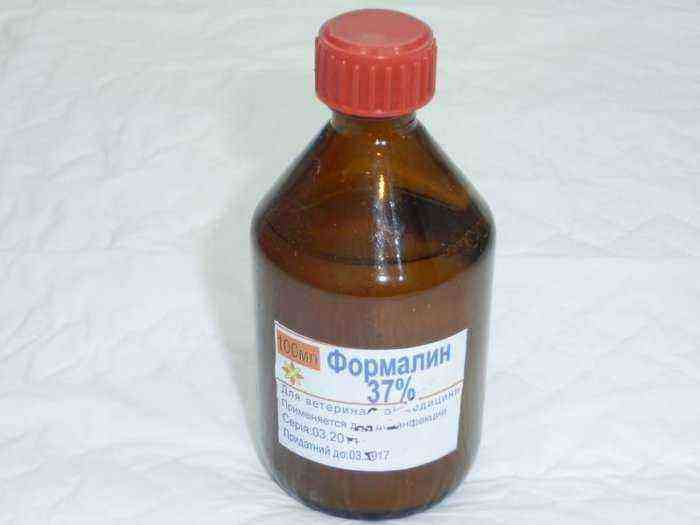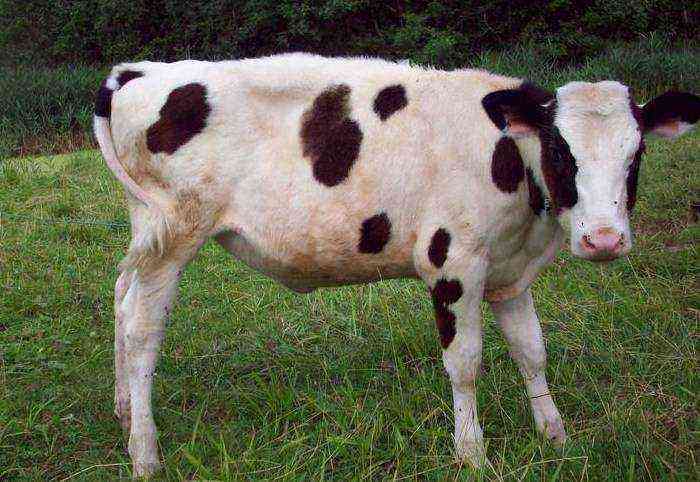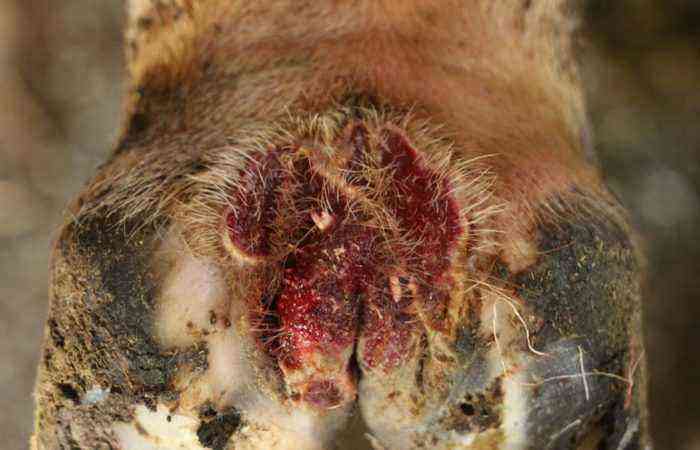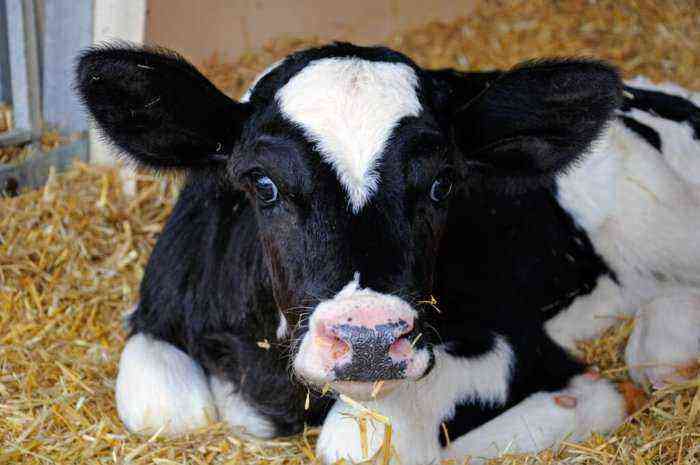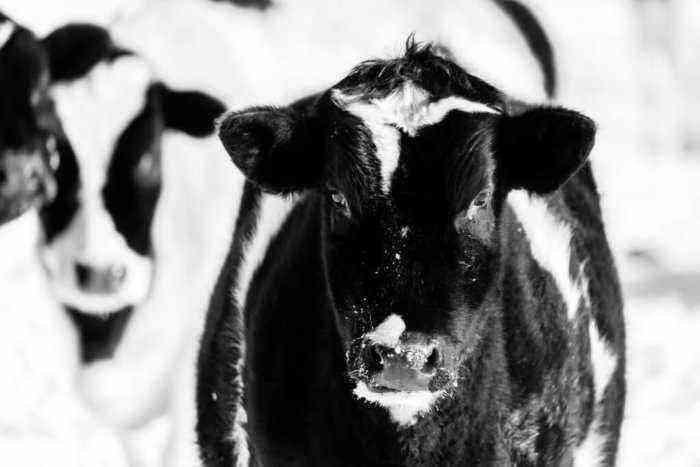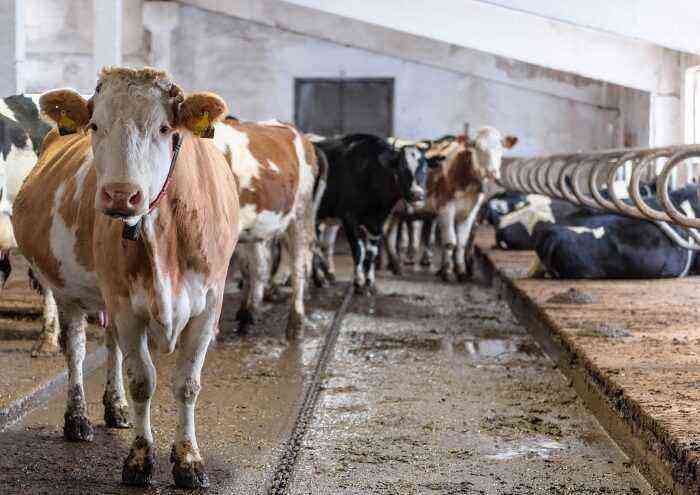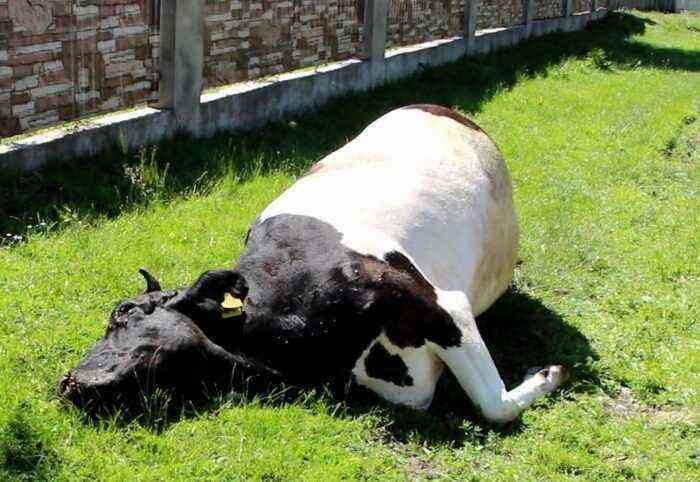The causative agent of the disease multiplies in the body of ticks. It infects the genitals of female arthropods that lay eggs. The cause of infection in cows is the bite of an infected tick. Piroplasmosis in cattle is a dangerous disease that can lead to a sharp decrease in livestock. If untreated, cattle die within 8-10 days.
Herd of cows in the meadow
What is a disease?
The source of pathology are ticks that infect livestock. In the process of a bite, piroplasms (babesia) penetrate into the body of a cow. Piroplasmids are considered blood parasites that infect the lymphocytes and erythrocytes of the animal.
They reproduce by fission in the body of arthropods. Ticks act as the first host of parasites. The infection is present in arthropod eggs. During the bite, the parasites enter the animal’s bloodstream.
Causes
Most often, animals that live in the south of Russia suffer from piroplasmosis. In summer, the risk of infection increases, as livestock are constantly on pasture.
Cows can become infected even when kept in a stall. Ticks are often present in green forage.
Arthropods show high resistance to low temperatures. Ticks can starve for 2 years. They prefer to live in tall grass where they wait for their prey. After being bitten by babesia, they enter the bloodstream of cows and begin to multiply.
The favorite breeding site of the parasite is the intestinal epithelium. The animal has an indigestion. If untreated, piroplasmids penetrate into the salivary glands of the cow. The infection affects the internal organs of the animal.

The epithelium of the large intestine
Symptoms
The duration of the incubation period is 10-12 days. After this, the acute phase begins, which is accompanied by the following symptoms:
- Infected animals begin to refuse food. The cow is very thirsty.
- The disease is accompanied by an increase in temperature up to 42 degrees.
- The cow moves with difficulty through the pasture. It lags behind healthy individuals and periodically falls to the ground.
- Active reproduction of microorganisms leads to a decrease in milk yield.
- Pathology can be recognized by an increased heart rate, which reaches 120 beats per minute.
- During the examination, you can notice that blood vessels increase on the mucous membranes. Within 2 days after a sharp exacerbation of the disease, the animal develops foci of hemorrhages.
- An exhausted animal with difficulty keeps its head in a straight position. The cow begins to have increased lacrimation.
The situation is exacerbated by disruption of the digestive system. The urine of a sick cow becomes dark, as it contains a large amount of protein.
The infection affects not only the liver and kidneys. The work of the heart muscle is disturbed in the animal. The disease leads to extensive cerebral hemorrhage. If left untreated, death is almost inevitable.
Diagnostics
Piroplasmosis of cattle can be detected using a microscopic blood test. An infected animal has parasites in its erythrocytes. If the cow died, then the material must be collected within 24 hours. This will improve the accuracy of the analysis results. The complexity of the diagnosis is complicated by the fact that piroplasmosis is easily confused with other pathologies.
Treatment
To prevent dehydration, it is necessary to put a container with clean water in the room where the sick animal is kept. The cow’s diet should contain sour milk and vitamin supplements.
To fight the infection, the veterinarian prescribes Flavacridine or Tripaflavin. The drugs must be administered intravenously. During treatment, do not exceed the dosage indicated in the instructions. You can get rid of piroplasmosis due to Hemosporidine and Piroplasmin.
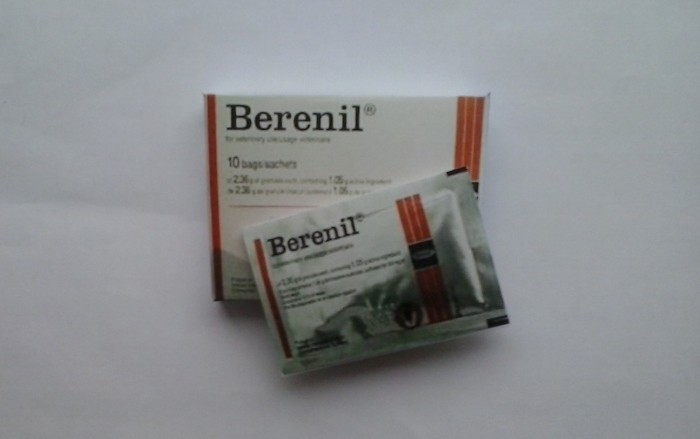
berenil
Juveniles are especially vulnerable to infection. Calves are injected intramuscularly with Berenyl. The animal can die within 8-10 days if the reproduction of dangerous microorganisms is not stopped.
In the treatment of piroplasmosis, it is necessary to adjust the diet. Cattle are fed with meadow grass and finely chopped root crops. You can restore the work of the heart muscle due to Glauber’s salt. To compensate for the lack of liquid cows need to drink a solution of sodium chloride. When parasites are detected, breeders need to act quickly enough. The disease in most cases proceeds in an acute form. Azidine (7%) is used to destroy babesia. If necessary, it can be replaced with another drug. Parasite reproduction causes vitamin B12 deficiency. The animal’s immunity drops sharply. To help him, you need to regularly inject with vitamin B12.
Important! A cow cannot be driven to another place. Infected cattle need rest.
Prevention
The breeder must adhere to several rules:
- You can not graze cows in places where there is a high probability of the presence of a large number of ticks. For grazing, you need to choose cultural areas.
- Before moving to a new place, it is necessary to treat the skin of cows with acaricidal agents (Sevin, Chrorophos).
- To prevent infection of the entire herd, it is necessary to introduce Berinyl to the cows. The drug will help protect animals from piroplasmosis.
- Cattle should not be pastured in one place for more than 3 weeks. Herd owners are encouraged to find 4 areas that can be used for grazing.
Important! The areas adjacent to the barn must be treated with anti-mite chemicals.
Conclusion
Piroplasmosis often leads to death. The animal dies due to parasites that enter the bloodstream after being bitten by ticks. Not all cow owners have a choice of pastures. Often the area is quite heavily infested with ticks. It is possible to prevent infection with piroplasmosis by treating with acaricidal agents.

